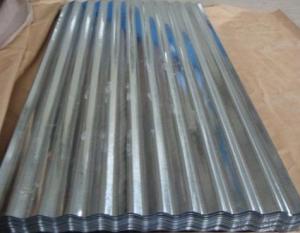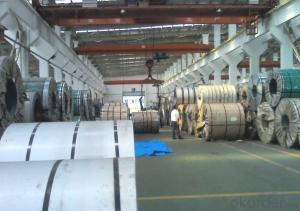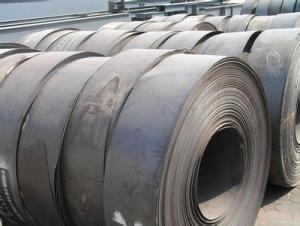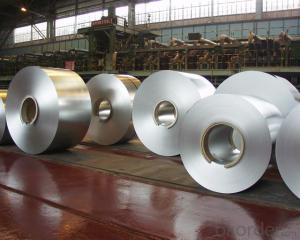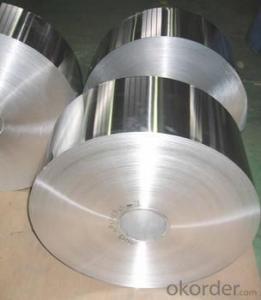Hot-Dipped Corrugated Steel Roofing Sheet
- Loading Port:
- Tianjin
- Payment Terms:
- TT OR LC
- Min Order Qty:
- 50 m.t.
- Supply Capability:
- 2000 m.t./month
OKorder Service Pledge
OKorder Financial Service
You Might Also Like
Item specifice
Product Brief Introduction
Hot-Dipped Corrugated Steel Roofing Sheet
--- Corrosion resistance: Pre-coated steel offers excellent corrosion resistance achived through continuous hot DIP galvanization and corrosion resistant primer/polyester coating. Protection is achieved when zinc and steel are together in the presence of moisture; The zinc protects the steel by galvanic action
Product Features
. Traditional aesthetics outlook
. Suitable for new house or renovation.
. Less joints, watertight
. Long life service
. Tedun also provide relative ridge cap, fasteners and other accessories
Product Specification
Standard:ASTM, GB,JIS,JIS G3302 ASTM 755 EN10169
Grade: DX51D CGCC CS
Thickness: 0.13mm~3.0mm,
Width: 1250,600-1250mm
Coil weight:3-12 MT
Coil ID:508/610mm
Chemical composition:
C | Si | Mn | Cr | Ni | P | S |
0.150 | 0.476 | 11.231 | 12.50 | 0.900 | 0.039 | 0.010
|
FAQ
How long will we receive the goods ?
45days after receiving workable L/C
how do you control the quality ?
we have our own quality control department ,we will arrange QC person to see the production line ,when goods finish ,before shipment ,our QC person will check the quality as per our test report request ,if the goods is ok ,then we issue the test report ,and we allow the goods shipping ,otherwise will not allow ship the goods.
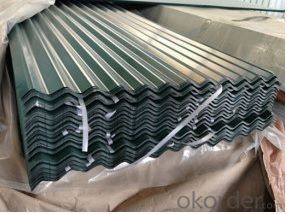
- Q:How do steel strips perform in electromagnetic shielding?
- Steel strips can be highly effective in electromagnetic shielding due to their strong magnetic properties. They are capable of redirecting and absorbing electromagnetic radiation, preventing it from penetrating or escaping the shielded area. Steel strips also provide a low resistance path for electric currents, helping to minimize the impact of electromagnetic interference on sensitive electronic devices.
- Q:How do steel strips handle exposure to moisture?
- Steel strips typically handle exposure to moisture well, especially if they have been properly coated or galvanized. However, prolonged exposure to moisture can lead to corrosion and rust formation on the surface of the steel strip. Regular maintenance and protective measures are necessary to prevent or minimize any potential damage caused by moisture.
- Q:Can steel strips be used in corrosive environments?
- Yes, steel strips can be used in corrosive environments, but the type of steel used and the level of corrosion resistance it provides will depend on the specific corrosive environment. Stainless steel strips, for example, are highly resistant to corrosion and can be used in a wide range of corrosive environments. They contain a minimum of 10.5% chromium, which forms a protective oxide layer on the surface of the steel, preventing further corrosion. These strips are commonly used in industries like chemical processing, marine, and food processing, where exposure to corrosive substances is high. However, not all steel strips have the same level of corrosion resistance. Carbon steel strips, for instance, are more susceptible to corrosion and may not be suitable for highly corrosive environments. In such cases, additional protective measures like coatings, galvanization, or using corrosion-resistant alloys may be necessary to ensure the longevity and performance of the steel strips. It is essential to consider the specific corrosive environment, the intended application, and the expected lifespan when selecting steel strips for use in corrosive environments. Consulting with experts or referring to industry standards and guidelines can help determine the most suitable corrosion-resistant materials for a particular situation.
- Q:How are steel strips used in the production of metal signage?
- Metal signage relies heavily on steel strips, which serve as a critical component. These strips offer structural support and durability, making them indispensable in the production of such signs. Typically, steel strips act as the foundational material for metal signage. They are carefully cut to the desired size and shape, serving as the building blocks upon which the sign is constructed. The selection of these strips is based on their strength and ability to withstand various environmental conditions, ensuring the longevity of the signage. During the manufacturing process, steel strips often undergo a protective coating to prevent rusting and corrosion. This additional layer enhances their durability and can take the form of paint, powder coating, or galvanization, depending on the specific needs of the signage. Moreover, steel strips are utilized to create raised or embossed lettering on the signage. These strips are precisely shaped and molded to form the desired text or design. This technique adds a visually appealing and three-dimensional aspect to the sign, increasing its attractiveness and professionalism. Furthermore, steel strips serve as the means for mounting the metal signage. They can be securely attached to walls, posts, or other structures through welding or screws. This ensures the stability and visibility of the signage, even in adverse weather conditions. In summary, steel strips play an integral role in the production of metal signage. Their strength, durability, and versatility make them essential for creating visually appealing and long-lasting signs.
- Q:How are steel strips processed for painting?
- To ensure the paint coating on steel strips adheres properly and lasts, a series of steps are followed. Typically, the process includes the following: 1. Degreasing: Initially, the steel strips undergo a degreasing process to eliminate any oils, greases, or contaminants present on the surface. This is accomplished by using either a chemical degreaser or a high-pressure water spray. 2. Surface Preparation: Following degreasing, the steel strip surface must be made ready for painting. Various techniques like abrasive blasting, sanding, or acid etching are employed to create a roughened surface that enhances paint adhesion. 3. Priming: After preparing the surface, a primer is applied to the steel strips. The primer acts as a protective layer, improving the bond between the steel and the paint. It also provides resistance against corrosion and assists in achieving a smooth, even finish. 4. Drying and Curing: Once primed, the steel strips are left to dry and cure. This can be done at room temperature or through forced drying methods like heat or infrared curing. Drying and curing ensure that the primer is fully hardened and ready for the paint application. 5. Painting: The final step involves applying the paint to the primed steel strips. This can be accomplished using various methods such as spray painting, dip coating, or electrostatic coating. The paint is applied evenly to achieve the desired thickness and coverage. 6. Curing and Quality Control: After painting, the steel strips undergo a curing process to ensure proper adhesion and durability. This may involve baking the painted strips at a specific temperature for a designated duration. Quality control measures are implemented during this stage to inspect for defects, unevenness, or imperfections in the painted surface. In conclusion, the process of preparing steel strips for painting involves cleaning, surface preparation, priming, painting, curing, and quality control to achieve a high-quality, long-lasting paint finish.
- Q:How are steel strips measured and classified?
- Steel strips are measured and classified based on their dimensions, thickness, and mechanical properties. The measurement of steel strips typically involves three main parameters: width, thickness, and length. The width refers to the distance between the two edges of the strip, while the thickness is the distance between the top and bottom surfaces. The length, on the other hand, refers to the overall size of the strip. Steel strips are commonly classified based on their thickness. They can be categorized into thin, medium, or thick strips. Thin strips usually have a thickness of less than 3 mm, medium strips range from 3 mm to 10 mm, and thick strips have a thickness exceeding 10 mm. This classification is important as it determines the suitability of the steel strip for various applications, such as in the automotive, construction, or manufacturing industries. Moreover, steel strips can also be classified based on their mechanical properties. These properties include tensile strength, yield strength, elongation, hardness, and other relevant characteristics. These properties help determine the strength and durability of the steel strip, making it suitable for specific applications. For example, high tensile strength strips are commonly used in industries that require robust materials, while strips with good formability are preferred in industries that require complex shaping or bending. In addition to dimensions and mechanical properties, steel strips may also be classified based on their surface finish. This can include factors such as the presence of a protective coating or the level of smoothness. The surface finish is important as it impacts the appearance, corrosion resistance, and overall quality of the steel strip. Overall, the measurement and classification of steel strips involve considering dimensions, thickness, mechanical properties, and surface finish. Understanding these parameters is crucial in selecting the appropriate steel strip for a specific application, ensuring optimal performance and durability.
- Q:Are steel strips suitable for the manufacturing of pressure vessels?
- Yes, steel strips are suitable for the manufacturing of pressure vessels. Steel strips provide high strength, durability, and resistance to pressure, making them a reliable choice for constructing pressure vessels. Additionally, steel strips can be easily formed and welded into various shapes and sizes, allowing for flexibility in designing and manufacturing pressure vessels to meet specific requirements.
- Q:What are the common defects in steel strips?
- Common defects in steel strips include the following: 1. Surface defects: Scratches, pits, or dents on the surface of the steel strip can be observed. These defects may occur during manufacturing or handling processes and can have an impact on the final product's appearance and quality. 2. Edge defects: Irregularities such as burrs, cracks, or irregularities can be found along the edges of the steel strip. These defects may cause difficulties in processing or lead to problems during subsequent manufacturing processes. 3. Thickness variations: Variations in thickness along the length of steel strips can be present, affecting the functionality and performance of the final product. These variations can be caused by issues with the rolling process, improper cooling, or uneven stress distribution during manufacturing. 4. Surface contamination: Steel strips can become contaminated with dirt, rust, or other foreign substances during storage or handling. Surface contamination can negatively impact the steel's appearance and corrosion resistance, making it less suitable for certain applications. 5. Coil set: Residual stresses from the rolling process can cause a curvature or distortion in the steel strip, known as coil set. This defect can make handling and processing the steel strip difficult and may result in issues during subsequent manufacturing processes. 6. Weld defects: In certain cases, steel strips are joined together through welding to form longer lengths. Weld defects such as incomplete penetration, cracks, or porosity can weaken the joint and lead to failure in the final product. 7. Decarburization: During heat treatment or other manufacturing processes, decarburization can occur, resulting in the loss of carbon from the steel strip's surface. This defect can reduce the hardness and strength of the steel, affecting its suitability for specific applications. Manufacturers must conduct thorough inspections and address these common defects to ensure the quality and performance of steel strips in various industries, including automotive, construction, and manufacturing.
- Q:How are steel strips used in the production of medical devices?
- Steel strips are used in the production of medical devices due to their strong and durable nature. They are often used as a raw material for manufacturing various components of medical devices such as surgical instruments, implants, and prosthetics. The steel strips are formed, shaped, and machined to create precise and reliable products that meet the stringent requirements of the medical industry. Additionally, steel strips are also utilized in the production of medical packaging, as they provide a secure and protective enclosure for sensitive medical equipment and supplies.
- Q:Can steel strips be used for making electrical terminals?
- Indeed, the utilization of steel strips is feasible for the production of electrical terminals. Steel, being an adaptable substance, possesses commendable conductivity and remarkable strength, rendering it appropriate for a wide range of applications within the electrical sector. The creation of steel terminals can be achieved by shaping steel strips through procedures such as stamping, bending, and welding. These terminals establish a dependable connection for electrical wires and components, guaranteeing the efficient transmission of electrical current. Furthermore, steel strips can undergo plating with substances like tin or nickel to augment their resistance against corrosion and enhance their conductivity. In summary, steel strips present a practical choice for the fabrication of electrical terminals due to their electrical properties, durability, and ease of production.
1. Manufacturer Overview |
|
|---|---|
| Location | |
| Year Established | |
| Annual Output Value | |
| Main Markets | |
| Company Certifications | |
2. Manufacturer Certificates |
|
|---|---|
| a) Certification Name | |
| Range | |
| Reference | |
| Validity Period | |
3. Manufacturer Capability |
|
|---|---|
| a)Trade Capacity | |
| Nearest Port | |
| Export Percentage | |
| No.of Employees in Trade Department | |
| Language Spoken: | |
| b)Factory Information | |
| Factory Size: | |
| No. of Production Lines | |
| Contract Manufacturing | |
| Product Price Range | |
Send your message to us
Hot-Dipped Corrugated Steel Roofing Sheet
- Loading Port:
- Tianjin
- Payment Terms:
- TT OR LC
- Min Order Qty:
- 50 m.t.
- Supply Capability:
- 2000 m.t./month
OKorder Service Pledge
OKorder Financial Service
Similar products
New products
Hot products
Related keywords
